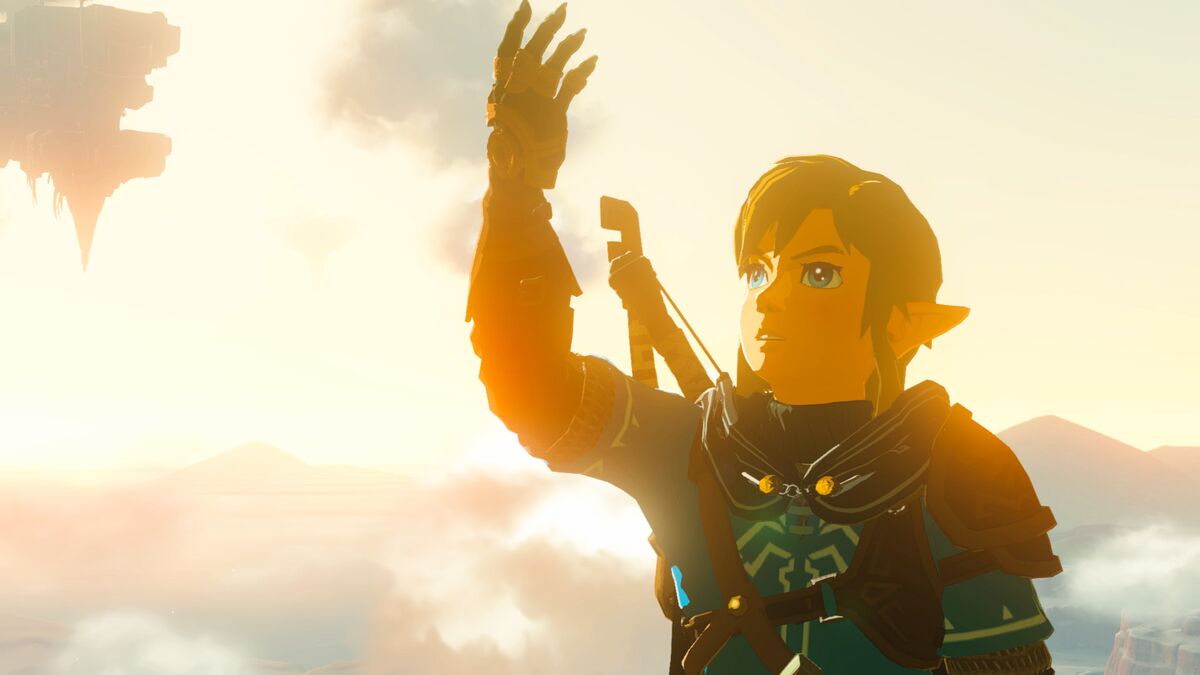You Might Want To Re-Readjust Your Expectations on ‘Tears of the Kingdom’s Dungeons

Ahead of The Legend of Zelda: Tears of the Kingdom’s release, one of the most hotly anticipated revelations was whether or not the game would have dungeons—like, “classic Zelda”-style dungeons, where you battle and puzzle your way deeper and deeper into a cave or fantastical building before you battle a final boss, in opposition to Breath of the Wild’s Divine Beasts, which are puzzle-centric and exist in a less “rabbit hole”-feeling type of structure, but still end in a boss battle.
As the previous paragraph might suggest, I personally am in the camp of people who don’t see a big difference between the Divine Beasts and “a traditional Zelda dungeon.” I realize this might make me the subject of a tomato-throw or five, but to me, puzzles have always been the key part of any Zelda dungeon. The biggest difference is how big classic dungeons are compared to the Divine Beasts. A dungeon in Skyward Sword or Ocarina of Time will take several hours, possibly multiple sittings, to complete. Divine Beasts typically take an hour or less.
And so, “classic” dungeons were the top of many players’ wishlists for Tears of the Kingdom, and right before the game’s release, I saw many people and outlets quoting a Q&A Nintendo published with TotK‘s release. The universal takeaway was, “Nintendo confirms the return of traditional dungeons in Tears of the Kingdom!” So, I went into TotK excited for some big ol’ dungeons. This expectation ended up biting me in the ass and, honestly, hindering my enjoyment of an incredible section of the game.
What Nintendo’s developers actually said
First of all, let’s look at what was actually said in the interview. The part of the discussion which generated the buzz came from designer Satoru Takizawa:
Making a “wide variety” [of dungeons] was pretty challenging. The four Divine Beasts were the dungeons in the last game, and they shared similar designs. This time, the dungeons are huge and each carry their own regional look and feel, just like traditional The Legend of Zelda games. We think they will provide a satisfying challenge for players. They were certainly a challenge to develop! (Laughs)
Satoru Takizawa (game designer), Nintendo Ask The Developer Q&A
You can see where the misquote happened. Takizawa said that each dungeon is “huge” and carries its own “regional look and feel,” which is also true of traditional Zelda dungeons. He did not say that the dungeons in Tears of the Kingdom are a return to traditional Zelda dungeons. You can further extrapolate on this, because Takizawa defines the Divine Beasts as dungeons—which a fair amount of players might scoff at. This feels like a classic case of people hearing what they wanted to hear.
But everything Takizawa said is true. The dungeons in Tears of the Kingdom are huge and much more varied in architecture than the Divine Beasts, and whereas the Divine Beasts all had similar structures, the dungeons in Tears of the Kingdom are all very different and reflect the specific characters of their environments.
Adjust to enjoy
That being said, anyone going into Tears of the Kingdom‘s dungeons expecting a full-on “traditional Zelda dungeon” is setting themselves up for disappointment. I know, because when I entered my first one, I harbored this expectation. I set foot in the dungeon, cried a little bit because it was all so majestic (I’m not ashamed), and spent the next day excitedly awaiting my next stint of gaming, when I expected to spend the next, say, three hours in the dungeon.
In my case (spoiler), my expectations were further skewed because, upon discovering it, the Stormwind Ark reminded me heavily of Skyward Sword’s Sandship dungeon.
That expectation actively hurt my gaming experience. Tears of the Kingdom’s dungeons are somewhere between Divine Beast and “traditional dungeon.” Honestly, they’re probably closer to Divine Beasts—the emphasis is on finding and unlocking keys-of-a-kind to get to its boss, and while they’re longer than the Divine Beasts, they’re still significantly shorter than a “traditional dungeon.” I finished my first one, cutscenes and all, in about an hour.
However, and I cannot stress this enough, they’re still incredible. Like “traditional dungeons,” their architecture is stunning. They’re much more intriguing and far less uniform than the Divine Beasts. Like in Hyrule itself, you feel much more of an incentive to poke around. The boss fights are not all hack ‘n’ slash (at least, Hebra’s wasn’t), but the choreography is marvelous.
But because I was expecting that traditional dungeon, I couldn’t appreciate Tears of the Kingdom’s iteration for what it was. So, I’m spreading the word: If you can, get rid of that attachment to a “traditional dungeon.” You won’t find it here, but if you can give it a chance, there’s something new and stunning in its place.
(featured image: Nintendo)
Have a tip we should know? tips@themarysue.com